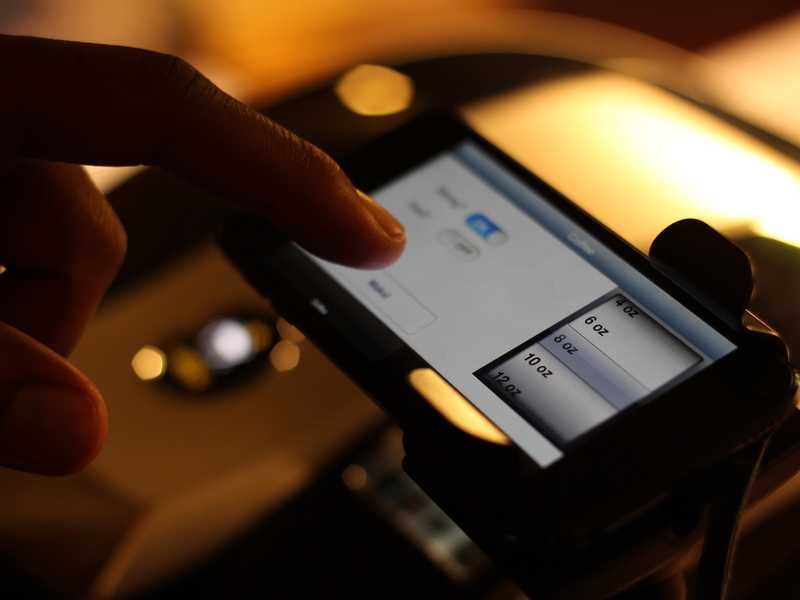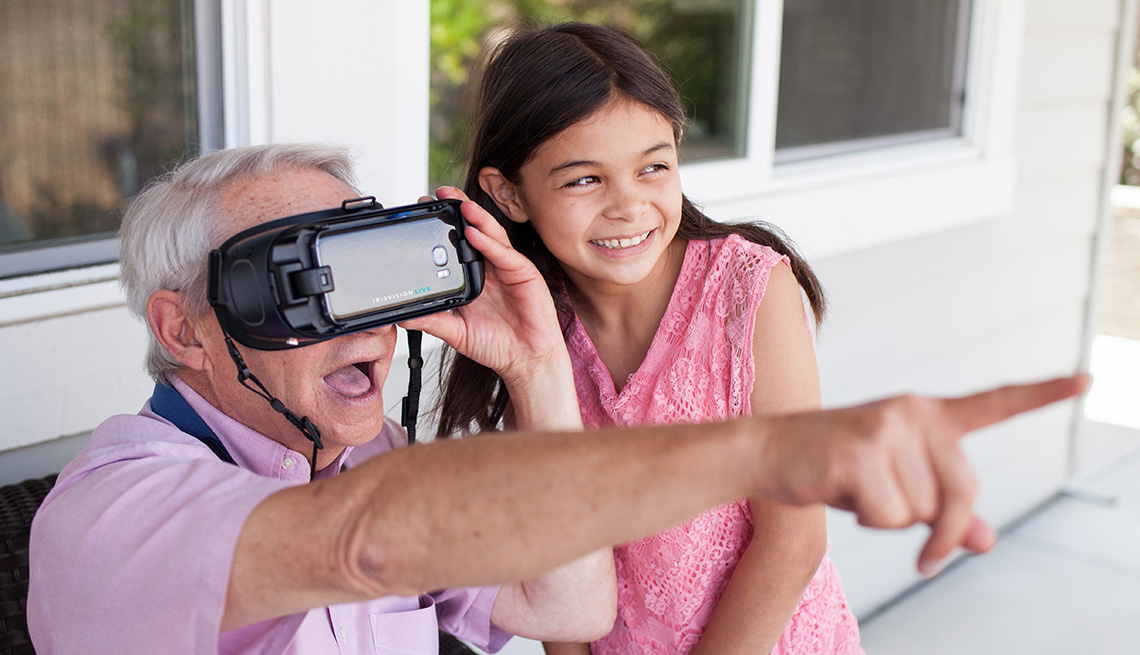Enhancing Lives With Advanced Assistive Devices for the Blind
The integration of advanced assistive gadgets for the blind is changing exactly how individuals experience their environments and communicate with their areas. What does this evolution mean for the future of assistive technology and its duty in encouraging people?
Overview of Assistive Gadgets
Assistive devices for the blind incorporate a diverse variety of innovations and tools made to enhance self-reliance and enhance the top quality of life for individuals with aesthetic impairments. These tools accommodate numerous demands, from navigation and mobility to communication and day-to-day task management.
Among the main categories of assistive devices consists of mobility aids, such as white walking canes and guide pets, which aid individuals navigate their surroundings safely. Electronic traveling help, outfitted with sensing units and audio comments, also play a considerable duty in flexibility enhancement.
Furthermore, devices that help with day-to-day living tasks, such as adaptive kitchen area tools, Braille labels, and chatting watches, equip people to carry out jobs separately. Interaction aids, consisting of display readers and Braille displays, promote accessibility to info and enable people to engage properly with the digital globe.
In addition, low-tech remedies like magnifying glasses and large-print materials stay crucial for numerous customers. Jointly, these assistive gadgets offer not only as functional devices but additionally as essential enablers of freedom, cultivating higher involvement in a world that commonly focuses on sighted experiences. Their assimilation into day-to-day live is important for advertising inclusivity and improving general wellness for those with aesthetic impairments.
Cutting-edge Technologies being used
Technology in modern technology has considerably transformed the landscape of devices readily available for individuals with visual disabilities. Amongst the most significant innovations are clever glasses incorporated with enhanced reality, which supply real-time navigation support and object recognition. These tools leverage progressed video cameras and expert system to provide acoustic cues, improving the user's spatial recognition and autonomy.
In addition, mobile applications have become effective sources, enabling users to identify money, reviewed message aloud, and navigate unknown environments through spoken guidelines. Tools such as Braille displays and refreshable Braille devices remain to develop, providing smooth connectivity with computer systems and smartphones, therefore improving communication and accessibility to information.
Wearable modern technology, consisting of smartwatches geared up with voice-activated functions, better equips individuals by facilitating quick accessibility to alerts and signals without calling for visual engagement. Tactile maps and 3D printing are additionally gaining traction, offering substantial depictions of areas that aid in orientation and wheelchair training.
Collectively, these cutting-edge modern technologies not only enhance the day-to-days live of visually impaired people however additionally foster higher freedom, inclusivity, and engagement with the wider area, consequently reshaping assumptions of accessibility. (Screen readers for the blind)
Individual Stories of Empowerment
Empowerment often arises from personal experiences that highlight the transformative influence of innovation on people with visual disabilities. Take, for instance, the tale of Sarah, a young artist who restored her passion for painting through making use of a smart cane furnished with barrier detection. This device not only facilitated her flexibility but instilled a newfound self-confidence, permitting her to navigate public rooms independently and seek her creative endeavors.

These narratives emphasize the profound effects that progressed assistive tools can carry every day life. By enabling people to get over barriers, modern technology fosters a feeling of autonomy and self-regard. Such empowerment stories function as a testament to the possibility of technology, showing exactly how the right tools can considerably enhance high quality of life and open doors to brand-new opportunities for those with visual disabilities.
Advantages of Advanced Solutions
Just how can progressed solutions essentially enhance the lives of individuals with aesthetic problems? The integration of cutting-edge technology right into assistive devices substantially changes day-to-day experiences for those affected by vision loss. These sophisticated options provide extraordinary freedom, allowing users to browse their atmospheres with confidence. Devices such as smart walking sticks geared up with sensing units, navigation applications, and wearable technology are created to supply real-time feedback, improving spatial recognition and lowering the risks related to mobility.
In addition, progressed assistive modern technologies promote social inclusion by facilitating interaction and interaction. Voice-activated tools and apps enable people to click here for info access info and involve with their environments independently, damaging barriers that formerly prevented their involvement in instructional, expert, and social setups.
On top of that, the modification and flexibility of these remedies deal with the diverse requirements of users, consequently boosting their total quality of life. Enhanced functionality, such as item acknowledgment and text-to-speech capabilities, equips people with visual disabilities to carry out jobs that they might have when found testing. Inevitably, progressed assistive modern technologies not only improve freedom and safety and security yet likewise advertise dignity and self-respect, enabling customers to lead satisfying lives.
Future Trends in Assistive Technology
As modern technology remains to progress, the landscape of assistive devices for the blind is positioned for amazing advancements that will certainly additionally enhance access and self-reliance. Arising fads in assistive innovation suggest a shift towards raised assimilation of expert system (AI) and maker discovering, allowing gadgets to adapt to specific customer needs in real-time. These developments are anticipated to facilitate more instinctive navigation systems that can determine obstacles and give audio comments, dramatically improving outside movement.
Furthermore, the advancement of wearable technology, such as clever glasses furnished with increased fact, will certainly enable users to get contextual info concerning their surroundings, thereby enhancing their spatial recognition. Innovations in haptic technology pledge to develop tactile comments tools, allowing individuals to regard details through touch, enhancing discovering and communication with their atmosphere.
Telecommunication advancements are likewise paving the method for remote aid remedies, where trained specialists can provide support through video clip telephone calls, making certain support is easily easily accessible. As these patterns unravel, the future of assistive devices for the blind will certainly promote higher freedom, equipping people to browse their world with self-confidence and simplicity.

Verdict
The integration of innovative assistive tools for the blind represents a considerable innovation in promoting freedom and enhancing top quality of life. By utilizing ingenious innovations, these tools empower customers to navigate their atmospheres with better confidence and autonomy. As the field continues to develop, continuous r & d will likely produce much more sophisticated options, additionally transforming the lived experiences of people with visual impairments and advertising a better sense of inclusion within society.
The assimilation of innovative assistive tools for the blind is changing how people experience their environments and communicate with their communities. The integration of innovative innovation into assistive tools substantially transforms everyday experiences for those impacted by vision click reference loss.As technology continues to evolve, the landscape of assistive tools for the blind is poised for impressive innovations that will certainly even more enhance accessibility and self-reliance. Emerging trends in assistive innovation show a change towards enhanced assimilation of man-made knowledge (AI) and device understanding, making it possible for gadgets to adapt to specific customer requires in real-time.The integration of advanced assistive tools for the blind stands for a considerable advancement in cultivating freedom and improving quality of life.